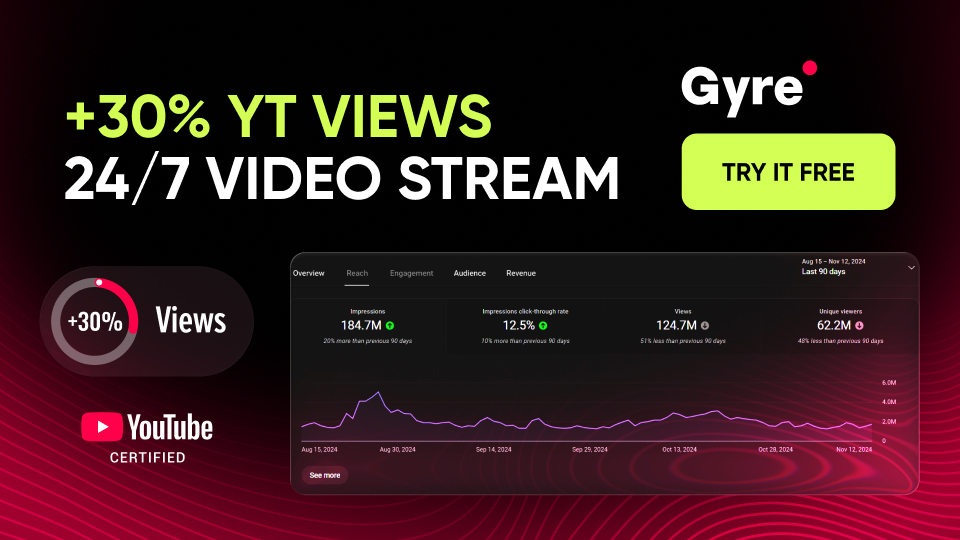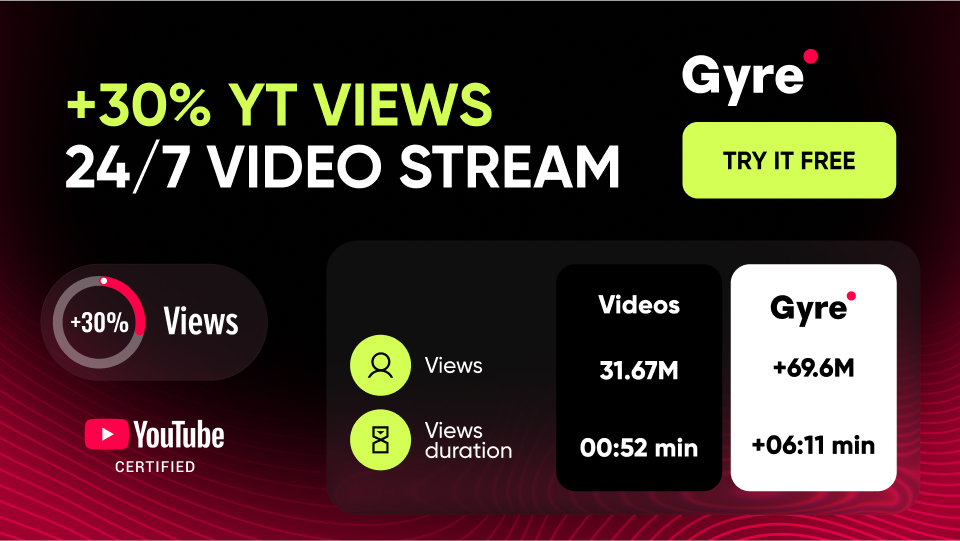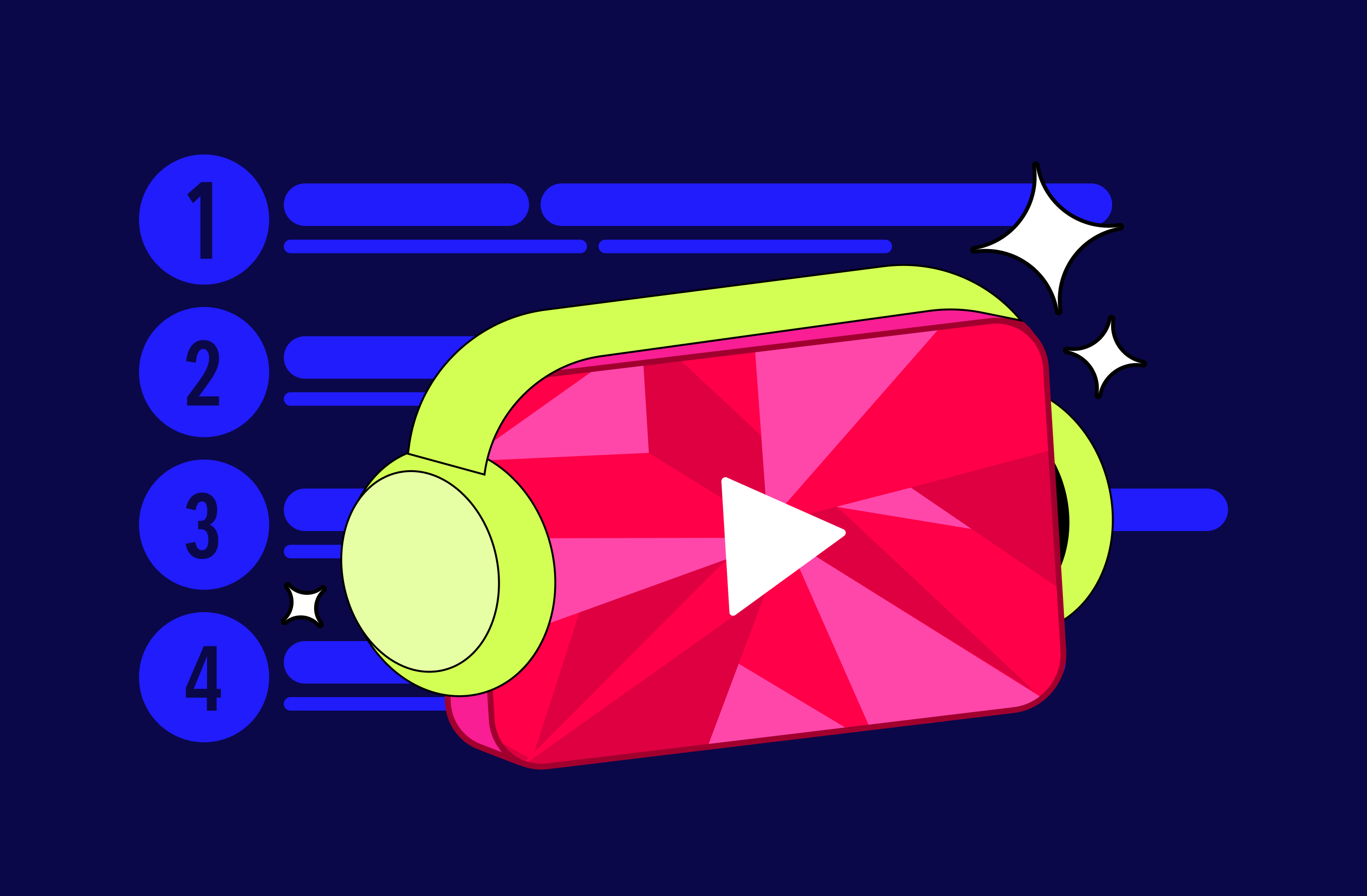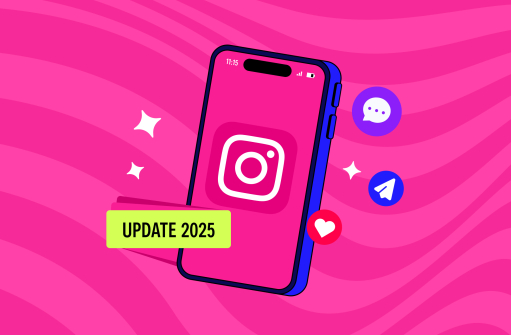This blog post was updated in May 2023, as YouTube changed the focus of its algorithms.
And then there is Mary; she is a viewer. Mary likes to watch videos about animals. Today she would love to see something about shrews.
And here’s the most interesting part: how do you get Mary to see John’s video?
It's all about YouTube's algorithms but a bit more nuanced. From 2023 algorithms now consider not only clicks and views but also pay attention to viewers' reactions to videos, the amount of time spent on video hosting, and the duration of watching videos in specific niches. The critical value in 2023 is your content's relevance to your target audience's interests.
Algorithms currently operate based on a system of personalized recommendations. For example, if a user frequently watches videos about a healthy lifestyle, YouTube will likely suggest videos on sports or meditation. However, if the user consistently ignores these suggestions, the algorithm will stop recommending them.
The search results are also tailored to individual users based on their preferences.
Mary’s doing fantastic, she just needs to go to YouTube, and the algorithm will send her content. Thanks to the algorithm, Mary will see personalized videos:
- On the main page of YouTube
- In the videos recommended section for viewing
- In the search results, use the YouTube search bar for the phrase specified
But John will need to work harder to get his videos included in recommended videos for Mary. As soon as the video appears in the suggested videos, YouTube will independently promote it to like-minded viewers such as Mary and John.
In this article, we will describe the principles that will help to promote videos for you and John.
Rule 1. You need to think like YouTube to conquer YouTube
The priority for YouTube is to maximize profits. The platform is interested (even more than John) in keeping viewers watching as long as possible. This can be achieved only by offering quality products. YouTube constantly searches for exciting content for users. In the process, YouTube continuously improves its algorithms so that viewers can find only those videos that satisfy them and keep them on the site.
In 2023, the main ranking factors on YouTube are as follows:
- Audience retention percentage on the video
- Total video viewing time
- Traffic dynamics
- User behavior (likes, dislikes, rewinding, reposts, and interaction with video prompts)
Additionally, it's essential to maintain a consistent publishing schedule for new content. YouTube's algorithms will sideline you if you rarely post new videos. In other words, the platform will consider your channel inactive and stop offering it to new viewers. We have provided detailed instructions on what to do if all your channel indicators suddenly decline.
Rule 2. Optimization and detection factor
Just because your video appears at the top of the search results doesn’t mean that it will be clicked on. We’ve noticed two key elements guaranteeing views and getting to the top of the recommended video section: the title and video icon.
A video with the right title and icon is more viable and appealing to the audience than one without these elements.
First, the platform is interested in offering exciting videos to the audience. YouTube algorithms based on metadata (video title and description, tags, type, category, and icons) analyze the usefulness of your content and recommend viewers to watch it. If the CTR of the video is low, YouTube will gradually reduce the impressions and show the video on the main page, in recommended videos, and the search results less often.
Second, think back to how you search for something to watch. The basic pattern is this: you enter a key query, and then most often, your gaze shifts to the left onto the video images – and you choose based on which icon is most attractive to you, intelligible, aesthetically pleasing, intriguing, and engaging. We generally select the best against a vast amount of similar content.
That’s it. The icon has done its job – you clicked on the video. This is similar to how Russian roulette works: you still don’t know the content, what kind of sound is there, the quality of the filming, etc. But the icon drew you. And your viewer does precisely the same.
Remember that you only have 1.5-2 seconds for a viewer to decide to watch or not watch your video during a cursory review of the recommended video.
Let’s analyze this rule with a clear example. We can see how a well-chosen thumbnail helped a video gain 4.2 million views (in 31 days) with a CTR of 12.7%. It turns out that every 7th viewer who watched this video chose it because of the icon. So don’t forget to look at the analytics!
High-quality SEO optimization of video metadata, including the title, description, tags, and hashtags, is crucial. They influence how quickly YouTube recognizes and categorizes your video and how it begins to showcase it to viewers in 2023.
Tips for writing engaging YouTube video titles
- Don’t overdo it with clickbait.
- The proper title without showing the essence of the content and/or going beyond the target audience’s interests reduces the chances of the video becoming popular.
We have created a step-by-step guide to help you optimize your content and channel using tags.
Don’t forget the video icon. Double-check viewer requests that might lead them to your videos. The video icon is a magnet that will attract and motivate the audience to watch. Icons bring more traffic and views to your videos and help you monetize your content more successfully.
Essential advice for creating click-worthy YouTube video thumbnails
- Don’t neglect the image specifications of 16:9 aspect ratio and 1280×720 resolution (at least 640 pixels wide).
- Place the text correctly. The text should not fall into the lower right corner where the duration of the video is displayed. It is better to place the text in one line.
- Forget about the small print – it’s unreadable, unnecessary, and spoils the overall impression.
- Make the icon as informative as possible: use comparisons, before/after, and large and bright elements.
- Analyze the created icon in miniature. Whatever you add to the image should be seen well.
Pay attention to this rule because the correct video optimization for YouTube allows algorithms to easily detect it and determine the target audience interested in the video topic. In other words, based on optimization, the algorithm determines what the video is about and which viewers to show it to. We call this the detection factor. Optimization also triggers YouTube’s algorithms to promote the video.
There are a lot of manuals on how to name a video correctly and what phrases to use. During our 11 years of working with YouTube, we’ve put together tried-and-tested ways to make titles and icons work. If you’re interested in having us collect design options for bright and compelling titles and conducting a detailed analysis of existing video icons, write to us in the comments under this article.
Rule 3. Stimulate audience activity
Modern YouTube algorithms follow the viewers and do not work in isolation from the audience. They evaluate viewer reactions to a video and, based on the rating, recommend or do not recommend the video for viewing by other potential viewers.
The more engagement and feedback a video receives from the audience, the more attractive the video is to YouTube’s algorithms. Subsequently, more often, YouTube will recommend your video to other users.
The following are considered: the average duration of watching a video, likes and dislikes, comments, transitions within the channel and from the video, subscriptions, polls, tips, and whether the video was shared.
The influence of engagement on YouTube video rankings
Likes and dislikes have the same benefit – they signal to the platform that your video evokes emotion. Therefore, it should naturally be shown to as many people as possible.
Let’s be honest; it’s easier to dislike than like. For some reason, we tend to function like this: if we like the content or are neutral, we will think, “Well, it’s okay,” and close the video. But if content causes a negative emotion or does not live up to expectations, we switch to the “I’m going to make such a scandal” mode, and then more negative comments and dislikes will rush in.
We are not encouraging you to create content that will cause only negative emotions; we’re just trying to explain human psychology a little. Engage your audience in any way you can: joke, ask for their opinion in the comments, offer links to previous videos, ask viewers to look for Easter eggs, transfer people to your other social media, pin your word, etc.
Of course, reposts are one of the most critical indicators of engagement, but they can only be achieved with high-quality content (although this is not enough). To experiment, insert subscription animation into several of your videos during editing.
Try to find the middle ground between asking the viewer to share and not being too pushy.
Cards and end screens on video clips deserve special attention. They help immerse the viewer deeper into the content on the channel and increase the overall viewing time. Learn how to increase the average watch time for individual videos and your channel.
Organize your content on the channel effectively by creating thematic or seasonal playlists and grouping videos of the same format. Add links to other relevant videos through cards in the script of new releases. In simple terms, ensure viewers can easily find and engage with the content they are interested in within your channel.
Keeping your audience active is just as important as creating quality content. There are no videos with millions of views and only a few comments.
So a high engagement rate is the foundation of your videos, a must for success on YouTube.
Rule 4. Work on content
What do you expect when you open a new YouTube video? You would most likely like to see something new, interesting, meaningful, funny, and high-quality pictures and sound. Thus, the content should be high-quality, engaging, meaningful, and helpful to viewers.
Double-check whether your videos match the channel’s theme and your content differs from the audience’s expectations.
There is a central point related to the quality of your content and optimization.
No matter how excellent the video icon is and how intriguing and alluring the name is, it does not matter if there is a dummy inside. Yes, YouTube will analyze your awesome badge and offer the video to the highest number of viewers. But the algorithms perfectly recognize if the viewer is satisfied. What’s the point of YouTube offering a video that will be played for half a minute and leave the platform?
Rule 5. Niche capacity determines views
Not all topics are equally popular. The first thing to do is to study your niche, explore the prospect of developing your content, monitor competitors with a similar initial target audience, and build a content strategy based on this data. Additionally, pay attention to the geographic specificity of your target audience and the relevant trends within that demographic.
If John makes content exclusively about shrews, the view cap will drop significantly compared to videos about all animals.
The narrower the topics, the smaller the audience resulting in fewer views and content interaction. Subsequently, the more time and effort it will take to develop the channel.
Rule 6. Trend trap
Try to balance the relevance of content for the consumer and trends. Do not focus your content strategy solely on hype and trending topics. Trends are often as fleeting as YouTube algorithm changes.
You will notice (and you will be correct) that videos on current topics can immediately skyrocket and gain popularity among viewers. Moreover, YouTube itself encourages creators to follow trends. YouTube promotes more shorts or live streams compared to regular videos. Or take everyone’s favorite collections and seasonal video requests (example: top 10 ways to gain an audience on YouTube). Holiday content is relevant in almost all niches: New Year’s edition of a funny show, New Year’s cartoons, or New Year’s house building in Sims 4. But some trends survive less than a few days, and there’s a chance you’ll get in a very competitive market of similar videos. That kind of content will be irrelevant to your channel in a month.
Rule 7. The viewer is always right
Authors create videos and publicly post them to fulfill their needs: self-expression, public recognition, earnings, etc. Always. If John just loved animals, he definitely wouldn’t start a YouTube channel. He would just admire them, shoot them on the phone, or even become a volunteer and join Greenpeace.
It’s the same with viewers: they stick to videos to relax, have fun, or fill the time when bored. But while the viewer can get by without videos, a creator can not get by without consumers of their content. Therefore, if you have embarked on the path of blogging and want to succeed, it’s essential to shoot not only what you personally like but also what is attractive to the audience. Again, YouTube actively promotes only those videos that keep viewers on the site.
An essential update from YouTube in 2023 is the emphasis on content personalization. As an author, it's crucial to understand your audience's holistic profile, including who they are, what they are interested in, and what they ignore entirely. It's also important to know what else they watch online besides your content.
The more specific your understanding of your target audience is, the more effectively you can attract and retain them on your channel.






